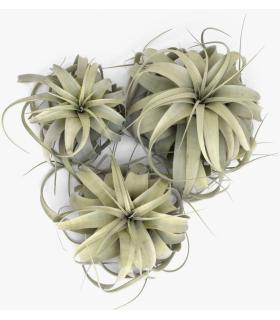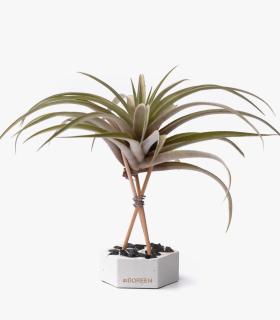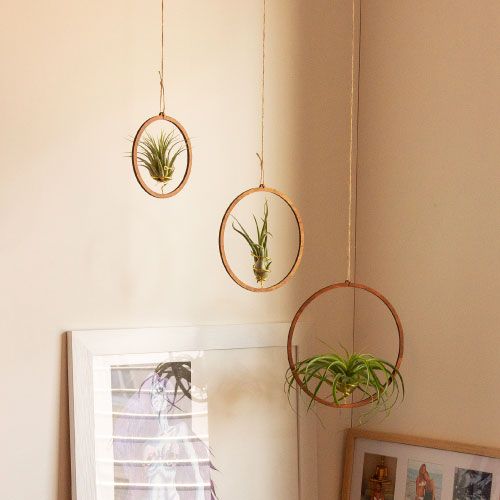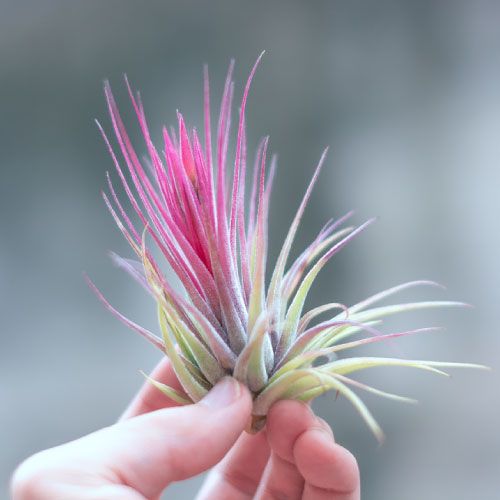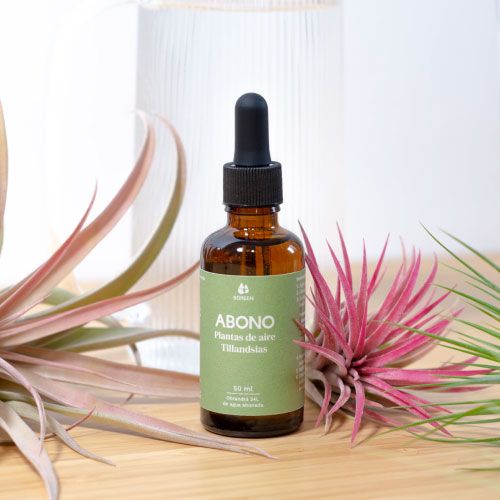Tillandsia Xerographica: The Queen of air plants
Among all the specimens of the family of aerial plants or also called tillandsias, this plant, the tillandsia Xerographica, represents the very plant aristocracy. It is a variety that is characterized by reaching a considerably large size in addition to having wide and succulent leaves. It is these traits that give meaning to the title of Queen.
The specimens that reach a greater size grow from the seeds coming from the flowering. This reproduction system is not usually the most common, since, in order for a seed to develop, very specific environmental conditions must occur. For this reason the most common way to reproduce is from cuttings.
As you can see in the photo below, its size can be considerably giant! 
Usually, the adult size of a Xeographica tillandsia is approximately 30 cm in diameter and does not reach them until after 10-15 years of life.
It is without a doubt, of the variebest known among the genus of the tillandsias.
Why is this plant different from the others?
To understand this we have to move to their place of origin. Unlike the other species we have for sale, this one comes from the semi-deserts of Guatemala. It is easy to understand that by not developing in tropical and humid forests typical of aerial plants, they evolved differently.
The xerographic tillandsia or as we call it, XER, have silver-gray leaves. These are born wide at the base and narrow as they reach the extreme. Its characteristic gray color is used in its natural habitat to protect themselves from intense sunlight. Remember that the more grayish the plant means that it has a greater amount of trichomes, which protect it from the direct rays of the sun.
To hydrate, they capture the humidity of the dew provided by the arid and cold Central American nights. But one thing is clear, not all of us have a climate like Guatemala or Mexico at home. So....
How can we care for a tillandsia xerographica?
- Temperature: Among all the aerial plants this is one of the most rustic and resistant. Tolerates temperatures between 1 to 45 °C. The temperature is not something that has to worry us, we simply have to try not to expose it to cold winter nights that reach temperatures below zero for several days.
- Light: In nature it is found at elevations between 180 and 600 meters above sea level, it is easy to understand that it is a lover of sunlight. At home we will place it near a window to be able to be in a south orientation or in lack of the previous one, this one.
- Irrigation: In case of having it outside, you just have to be careful that water does not accumulate in the crown, central part of the plant, since it could rot. Therefore, if it is indoors, great and if it is open, try to place it inclined so that when it rains the water does not remain stagnant inside. In case of having it indoors it is great since you only have to immerse it in fresh and soft water once every two weeks (the best thing is rainwater). In the hottest months it is good to submerge it weekly in addition to spraying water with a sprayer like the one available on the web to maintain a good level of humidity. It is also applicable if you have heating or air conditioning. 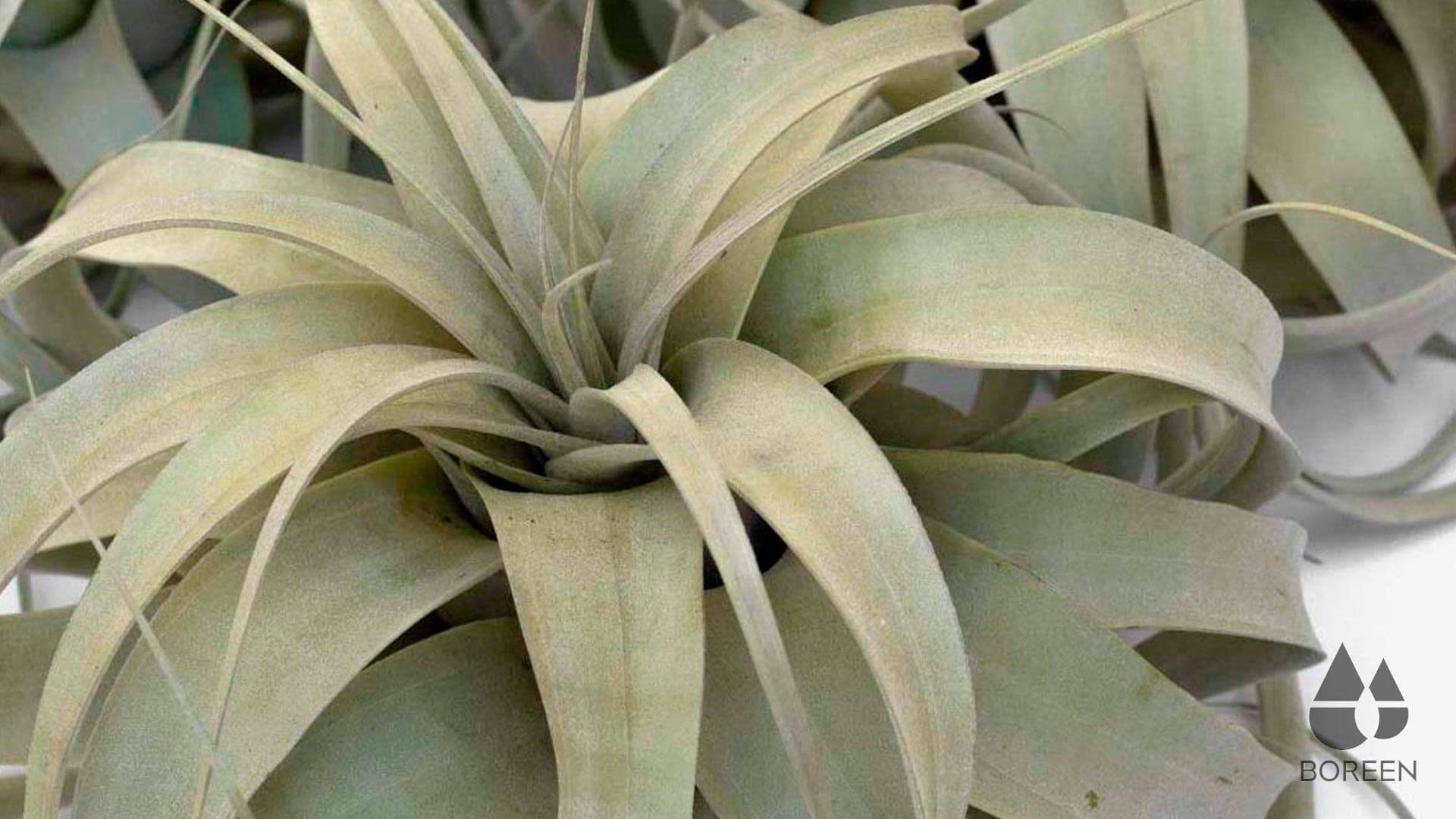
It is important that once watered, this plant is well drained and has good air circulation. This will help all that moisture you haven't needed evaporate.
- Fertilizer: Obviously they are not paid in nature. The organic matter that falls on them, such as leaves or even dead insects, serves as a contribution. At home we can apply an exclusive foliar fertilizer for tillandsias once a month or every two weeks, failing that you can also use fertilizer for epiphytes such as orchids, yes, in this case we will apply half or less of the dose indicated by the manufacturer since it could be too strong. Actually, the fertilizer is not necessary, but it is true that this extra contribution is, in many cases, a stimulus for its flowering and growth.
- Pruning: Pruning as such is not necessary, it is more of an aesthetic issue. With the passage of time new leaves will come out but also the older ones will dry out (especially if the humidity is low). If they detach easily they can be started directly otherwise the dry part of the leaf can be trimmed.
DECO Ideas
Did you find this article interesting? We'd love to hear from you. Below you can leave us a comment and tell us if you would like us to do more articles like this. It would also help if you could tell us if there are any topics you would like us to talk about in future articles.


